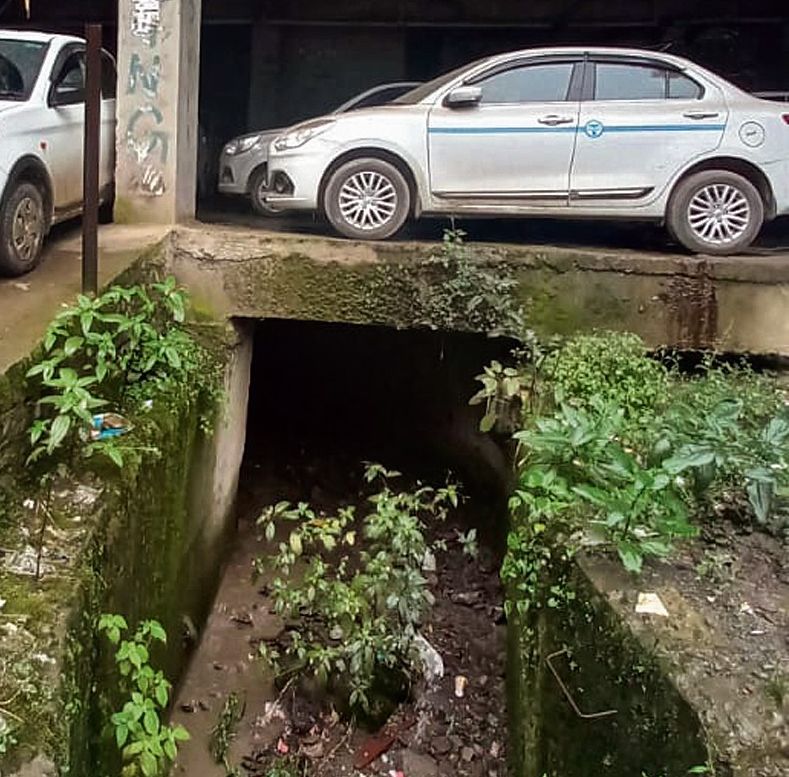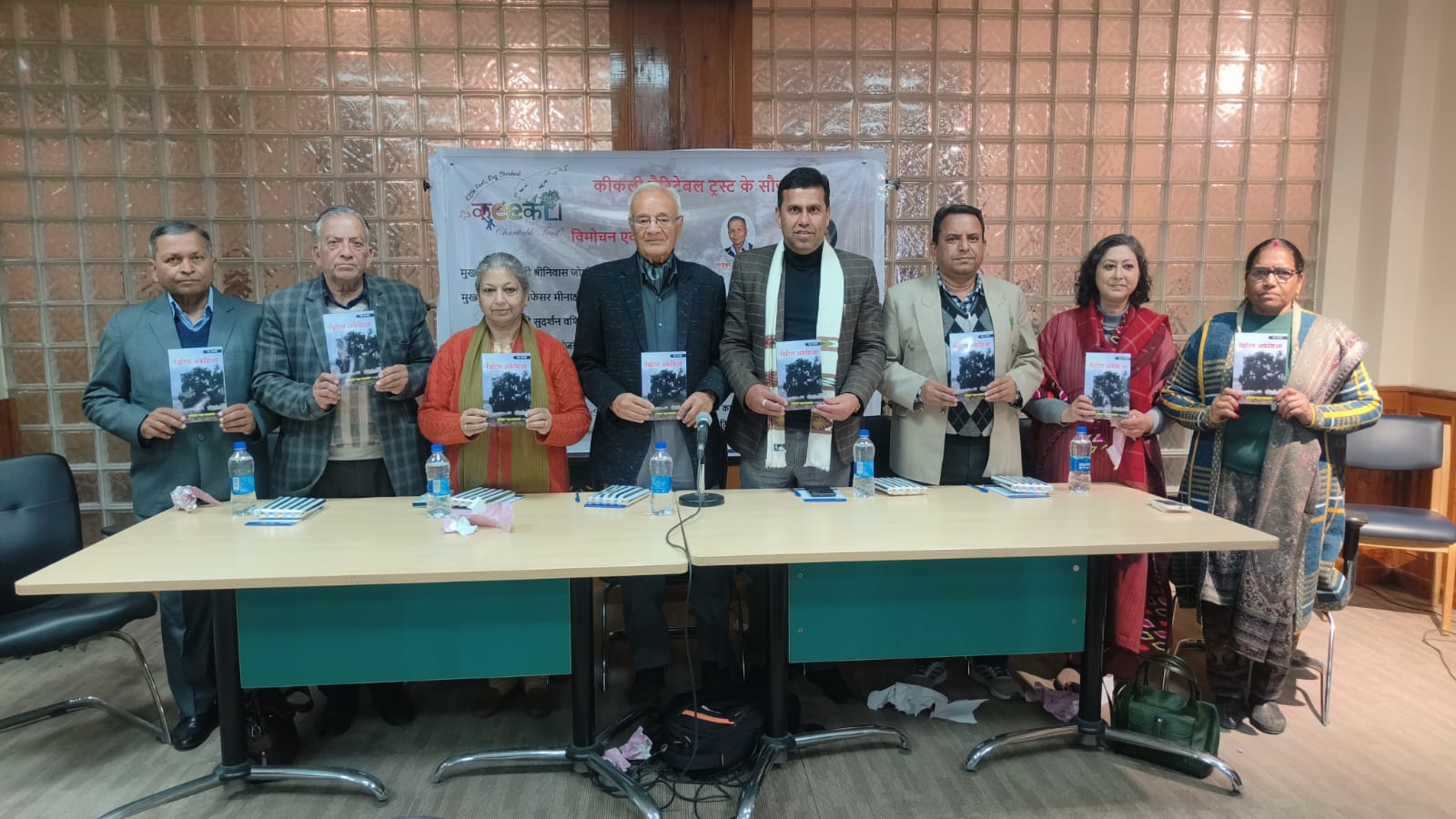Natural Water Ravines of Shimla: Unsung Heroes of City
5 min read
Image Source Internet
Nallas Rule Shimla City — Don’t Mess with Them!
This story was written a few years back, but still holds so true today, more or less like a prediction!
Shimla, Aug 25 Vandana Bhagra
The recent heavy rainfall in Shimla City brought life to a standstill, forcing the Deputy Commissioner to declare a two-day holiday. Rivers overflowing, landslides, fallen trees, and blocked roads within the city and on state highways created chaos. While this might seem like a result of natural disasters, the truth is that the neglect of the city’s natural drainage system played a significant role in exacerbating the situation.
A weird title for a story. Right? But, if you think deeply then the importance of these natural water ravines, now nallas, played a very central role in the history of Shimla City. Confused about how these can be a hero when these are just water run-offs, but it is true, and I will make my point today. The recent incessant rains left the City paralyzed, such, that Shimla DC had to announce a two-day holiday. The overflowing rivers, landslides, trees falling, and road blockages within the City as well as the State highways, were all witnessed by the locals and this information was flooded on various social media, as a means to disseminate information as well as to know the whereabouts of friends and relatives too. The situation was so bad that in a few areas people sought safe houses leaving their homes and belongings. The questions remain Why so and who is to be blamed?
We often read again and again about the glorious heritage of Shimla City, the British Raj, and the superb architectural buildings; rather locals rave about it to tourists or anyone coming to town. The fact that Shimla is built on seven hills — Prospect Lodge, Summer Hill, Observatory Hill, Inverarm Hill, Bantony Hill, Jakhoo Hill, and Elysium Hill — is also an important fact. Since the topography of the city was thus, the then small ravines/nullas were equally important, as these natural sources of water served the city for many years. Until the ’90s many such nullas were sources of natural drinking water as well. But, then nothing lasts forever. Yes, the so-called rampant development, growing population, increasing demands on the city’s land and resources, and most of all greed engulfed Shimla City. Harsh! Right? But, true.
These nullas actually worked as the natural drainage system for the City. Working endlessly, tirelessly and diligently, without anyone’s interference these carried the run-off rainwater way down into the rivers. If you believe it or not, the water flowing to the south of the Ridge goes all the way to the Bay of Bengal and that flowing towards the north goes way down to the Arabian Sea. But, then the administration and citizens were too busy with the expansion of the City that they totally ignored this fact.
Beginning in the ’90s, the first such blunder was made when the seven-story Indira Gandhi Khel Parisar was built on a nalla, yes it was famously known as the churail bowli, due to the mysterious ghost stories weaved around it. The nalla, which began all the way from Jakhoo Hill, towards Shiwalik Hotel, alongside the Bridge View Hotel, and below the Combermere Bridge towards Lift and way below is now nothing but a sad shadow of its past. It was a main source of natural drinking water once, and I myself remember filling water from the churail bowli, which had three iron-made lion faces through which water flowed. The construction on and along the nalla has left it dry, filled with mud, dirt and garbage. The addition of the new Lift, that is being built, is also a cause of concern.
The second such nalla that now faces extinction in the name of development is the one that flows opposite Marina. Here too the water source was from the Jakhoo Hill, but what you see today is a small trickle of water, and the patch of slope is covered with garbage. Once, the most photographed site, now nothing more than a dirty slope with equally dirty water flowing through it.
The magnificent 150-year-old High Court Building, or the Ravenswood complex, too left the citizens disappointed when renovations and new additions in 2012 were made in the name of development, as a 10-storeyed building was erected. The annexe built next to the old building for lawyer’s chambers to is an eyesore. And, the fact remains that this too has been built on a nalla.
The Jakhoo Ropeway… an entrepreneur’s vision or just another means for profiteering, began construction in 2003 and was finally inaugurated in 2017, has too encroached upon these nallas. Another ropeway that is being built near the Tutikandi Bus Stand, where a part of its own structure was damaged due to a landslide is also an example of greed. More than 80 percent of the citizens still fail to understand its relevance.
You walk on any Shimla trail, and you will come across many such natural nallas, be it the Lakkar Bazaar area, or the Forest Road, Sanjauli side, Panthaghati, Dhalli side or the Chaura Maidan side, you will see the same sorry state of this natural drainage systems. The narrowing of these nallas, filled with garbage, dirt and debris all add to the woes of Shimla City.
I can add many more such monstrosities, but these are just a few examples, and I am sure Shimlaites already know all about them. What the administration and or governing bodies failed to understand is that you cannot control the flow of water. When these nallas are restricted/narrowed or construction is done upon them, then they divert their routes and start seeping underground, which with time become ticking time bombs. The ground around them becomes fragile and hills lose their viscosity, thus becoming a major cause of landslides. Which was actually witnessed during the last week’s rains. This phenomenon is not a one-day thing but a gradual process for which the administration has to be blamed.
The Justice too woke up a little late to take charge as the legal guardians of the City — taking note and strict action against illegal constructions, demolitions, saving the environment, and encroachment of forestland by profiteers. Accompanying them on this mission now is the National Green Tribunal (NGT), which enforced a blanket ban on construction in core areas of Shimla city, with equally stringent guidelines for new construction. The hills are being dissected slowly and steadily in the name of progress and growth, which needs to be stopped soon.
Taking cognizance of the situation, a well-known resident of Shimla City, J R Nanda, whose roots are deeply embedded in this town filed a Civil Writ Petition under Article 226, against the Administrators of Shimla Town and the Central Ministry of Environment in July 2018. It reads, “indiscriminate and illegal dumping of garbage, liquor bottles and plastics on the environment which is causing damage to the environment of Queen of Hills Shimla and posing a health hazard to the citizens and tourists”; “ensure cleanliness in the city”.
School students, various NGOs, environmental groups and concerned citizens have raised their voices against this indiscriminate development, but the results are far from to be seen.
Shimla City is waiting to choke because of its own ravines / nallas!
Unveiling Chaos: Shimla’s Environmental Crisis – Natural Beauty vs. Concrete Jungle







The author in her article on Nallas of Shimla has precisely touched the results of human greed and the compromises the governments from time to time have made. Old residents of Shimla vividly remember the natural drainage of the town. Actually they were not nallas carrying muck or plastic waste. These natural slopes apart from saving Shimla from disasters used to carry clean water which while flowing used to emanate music. The article has very clearly identified the buildings which created havoc. My compliments to the author for writing such a nice piece.
Saddening